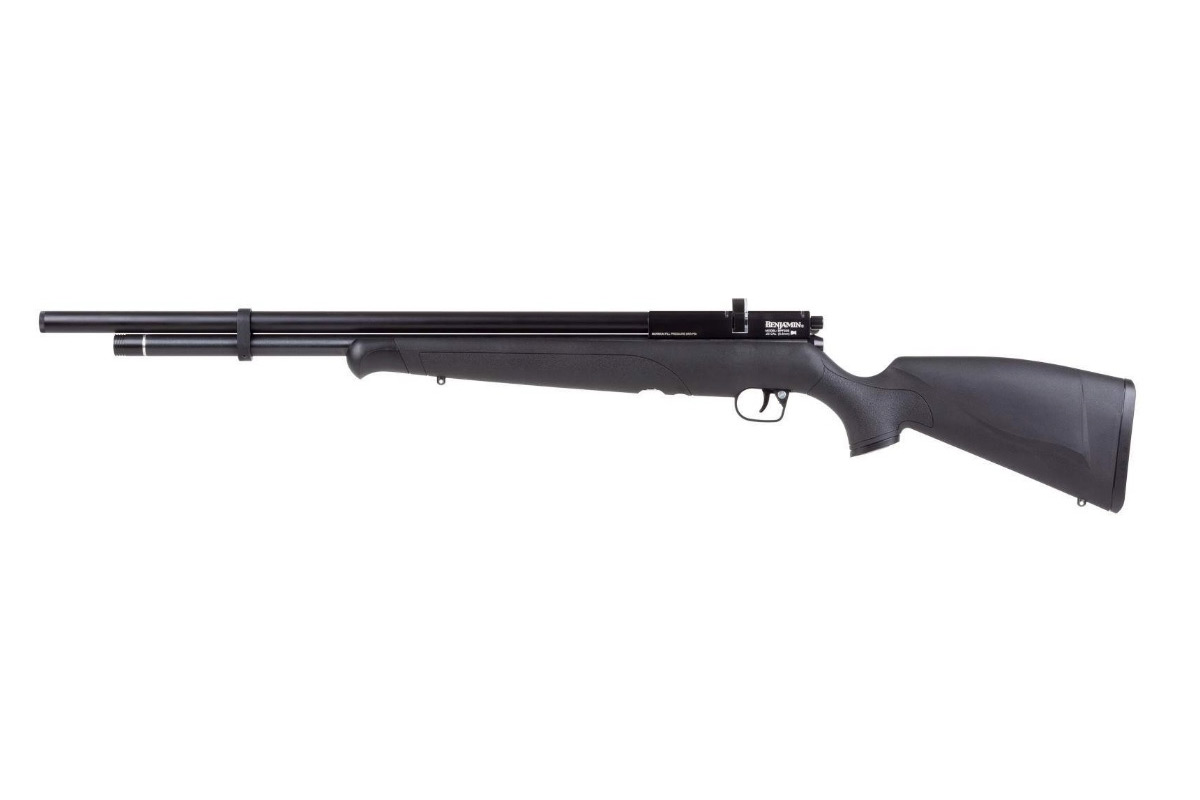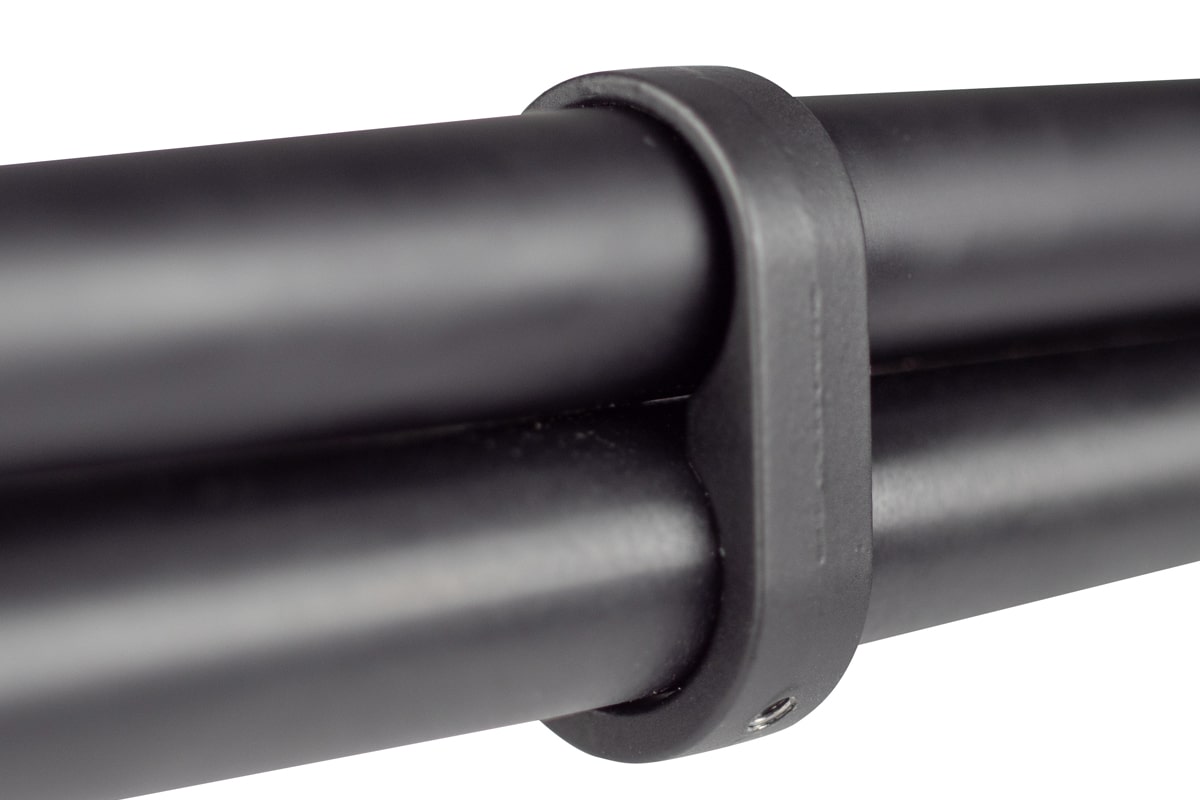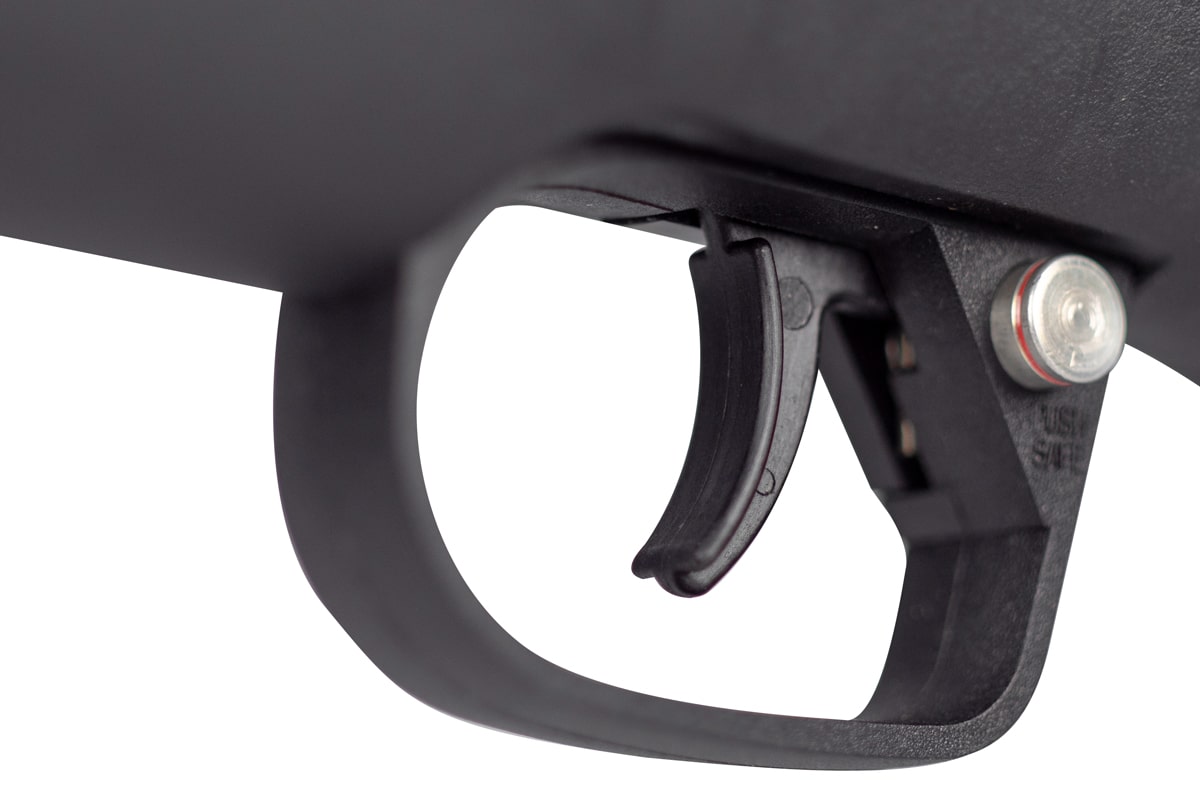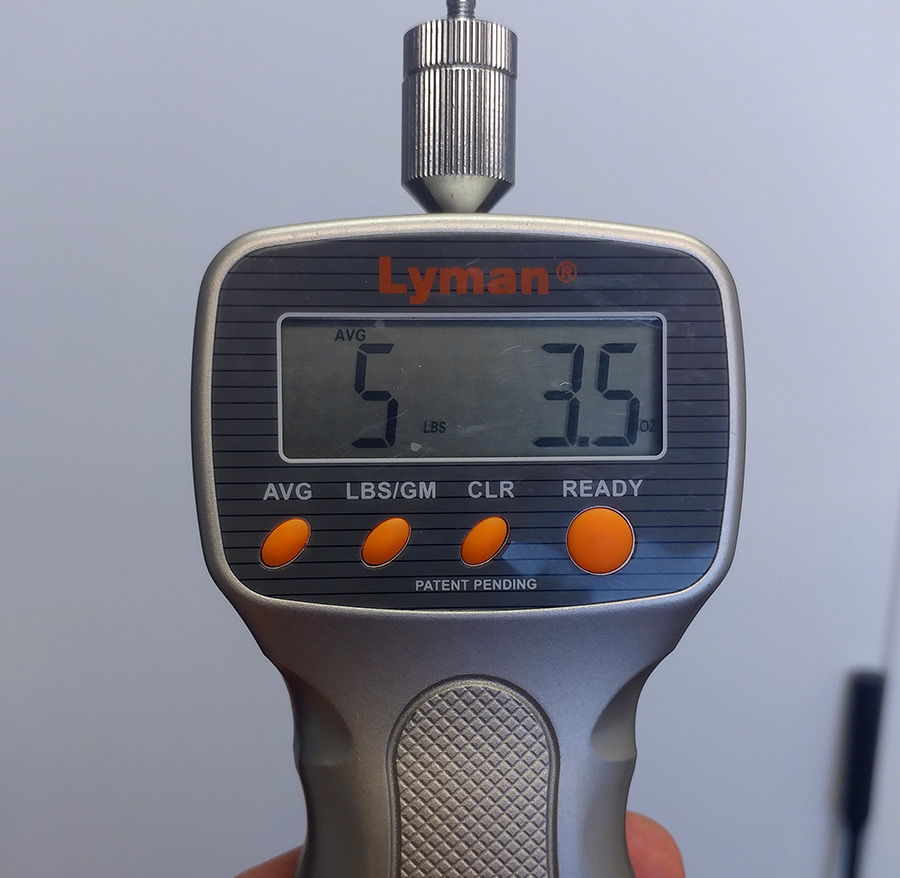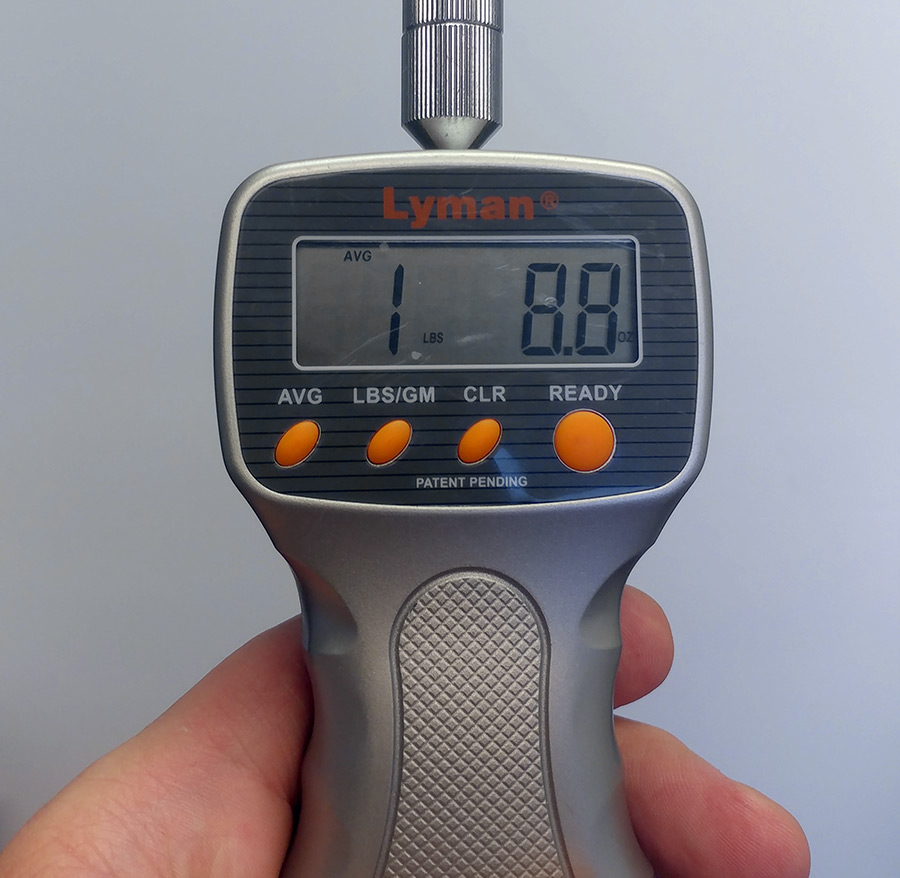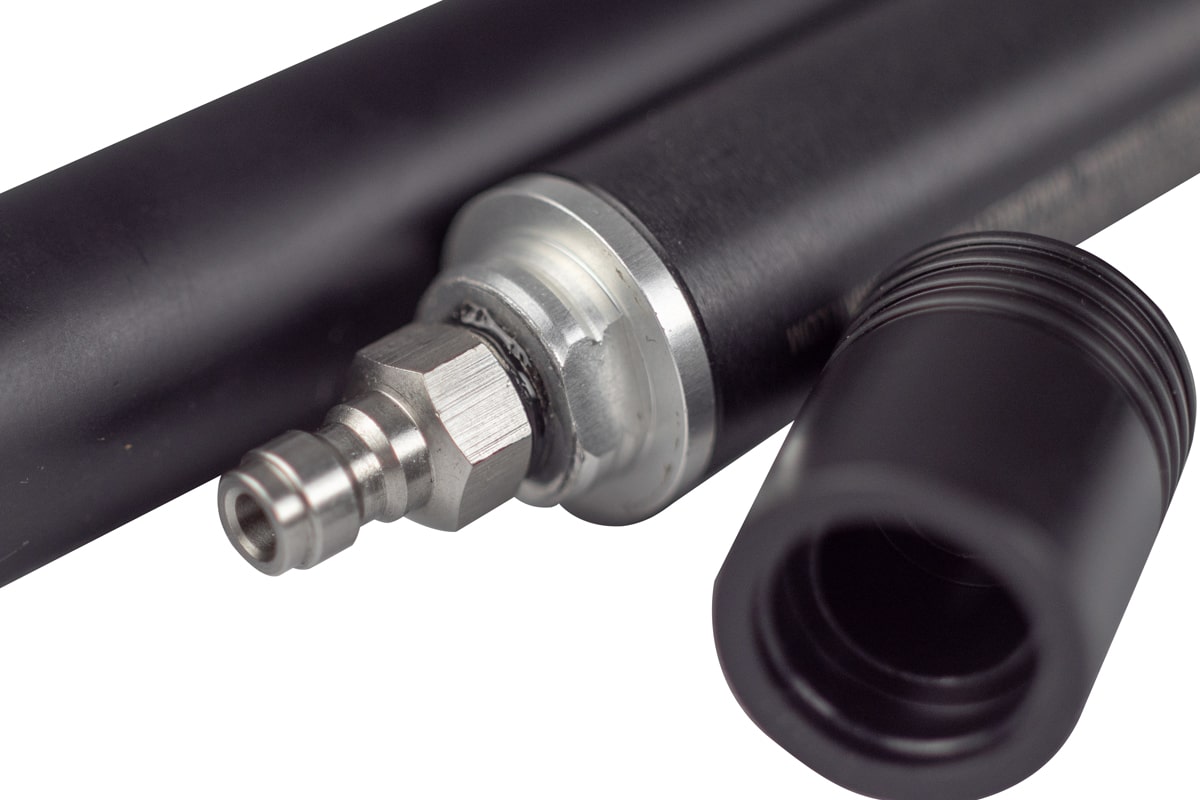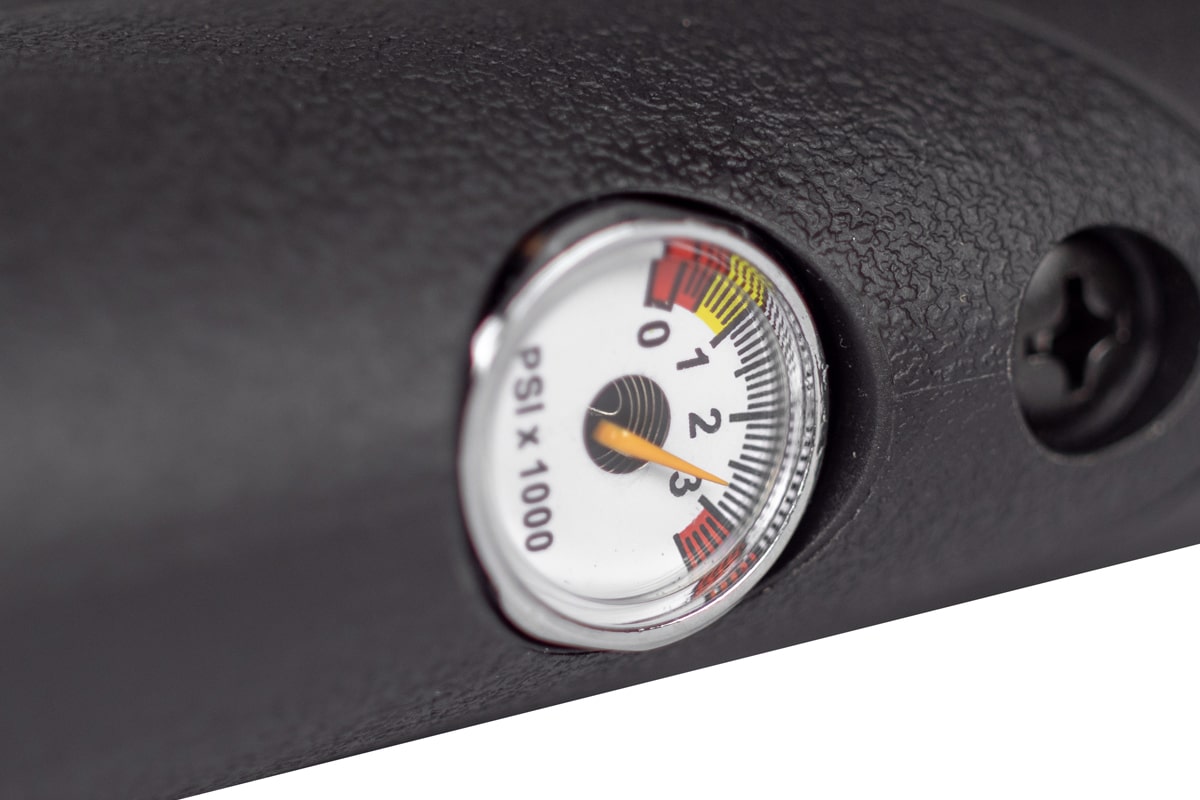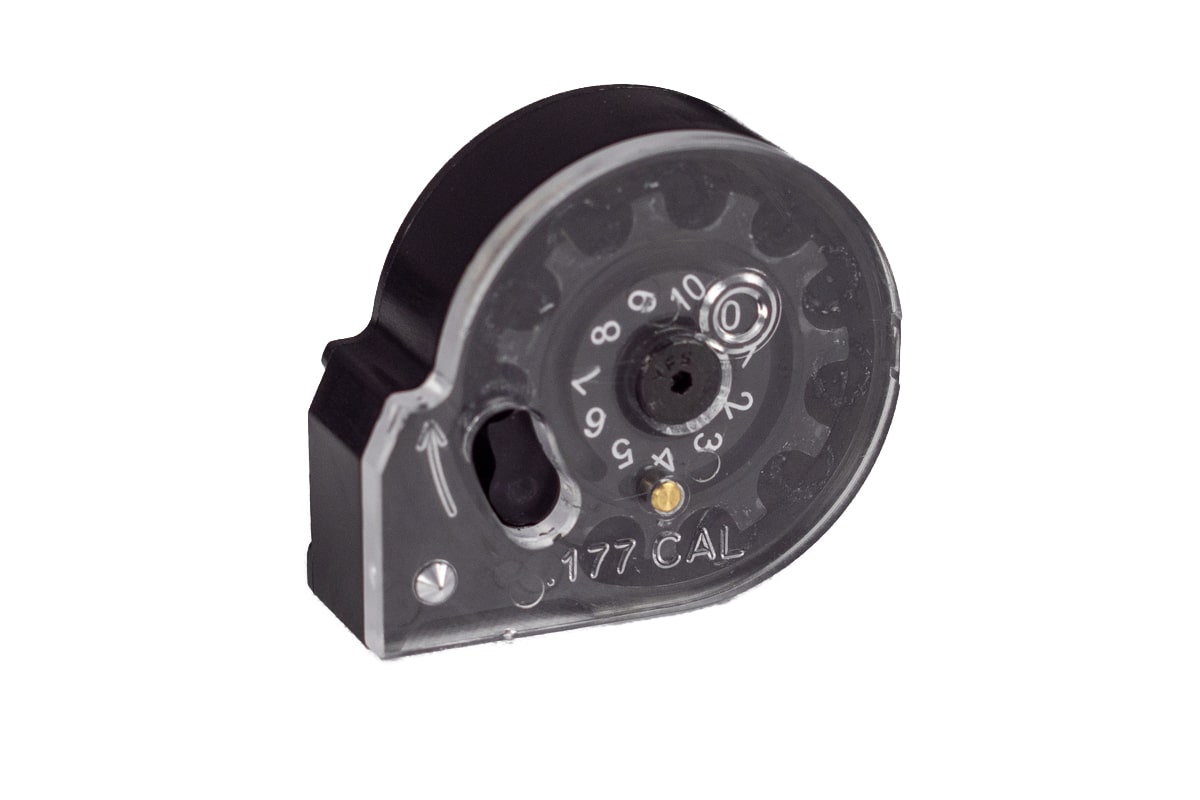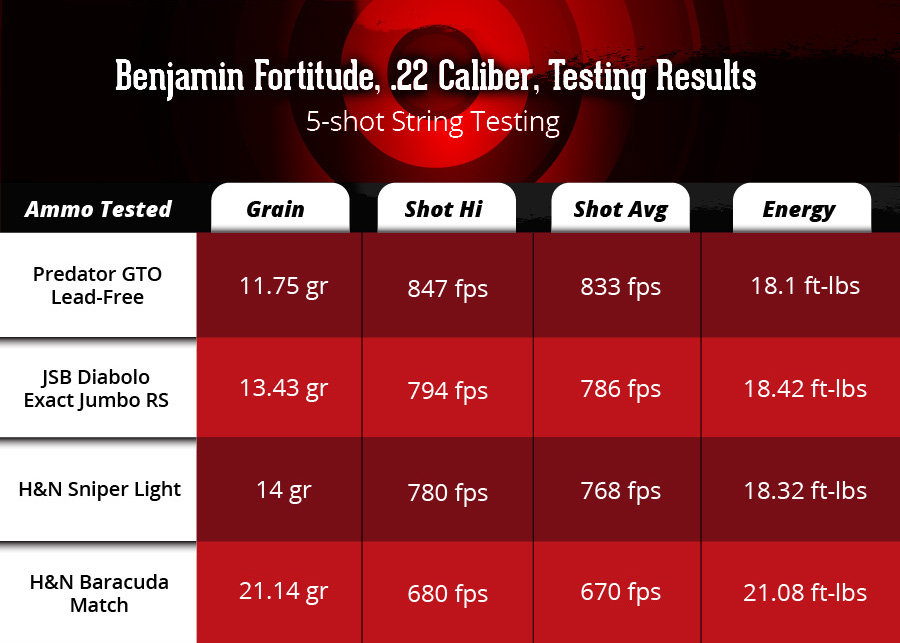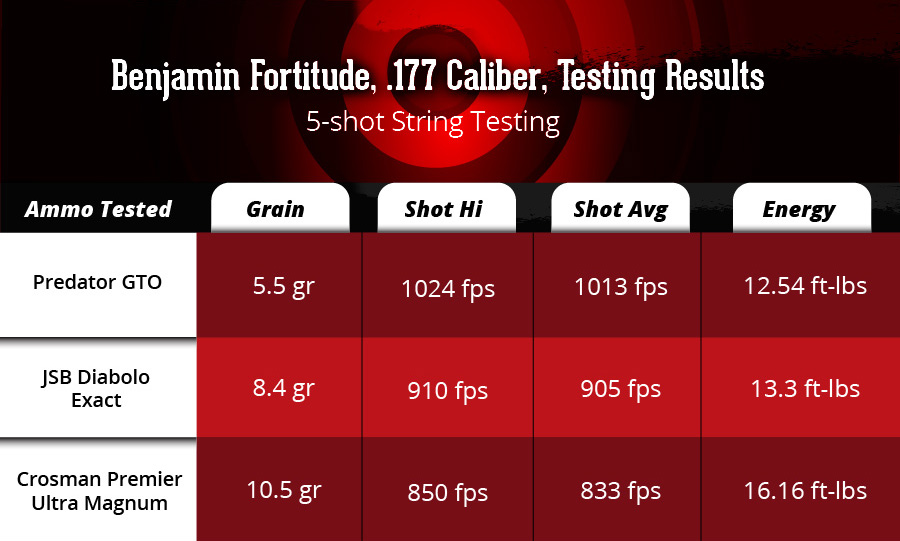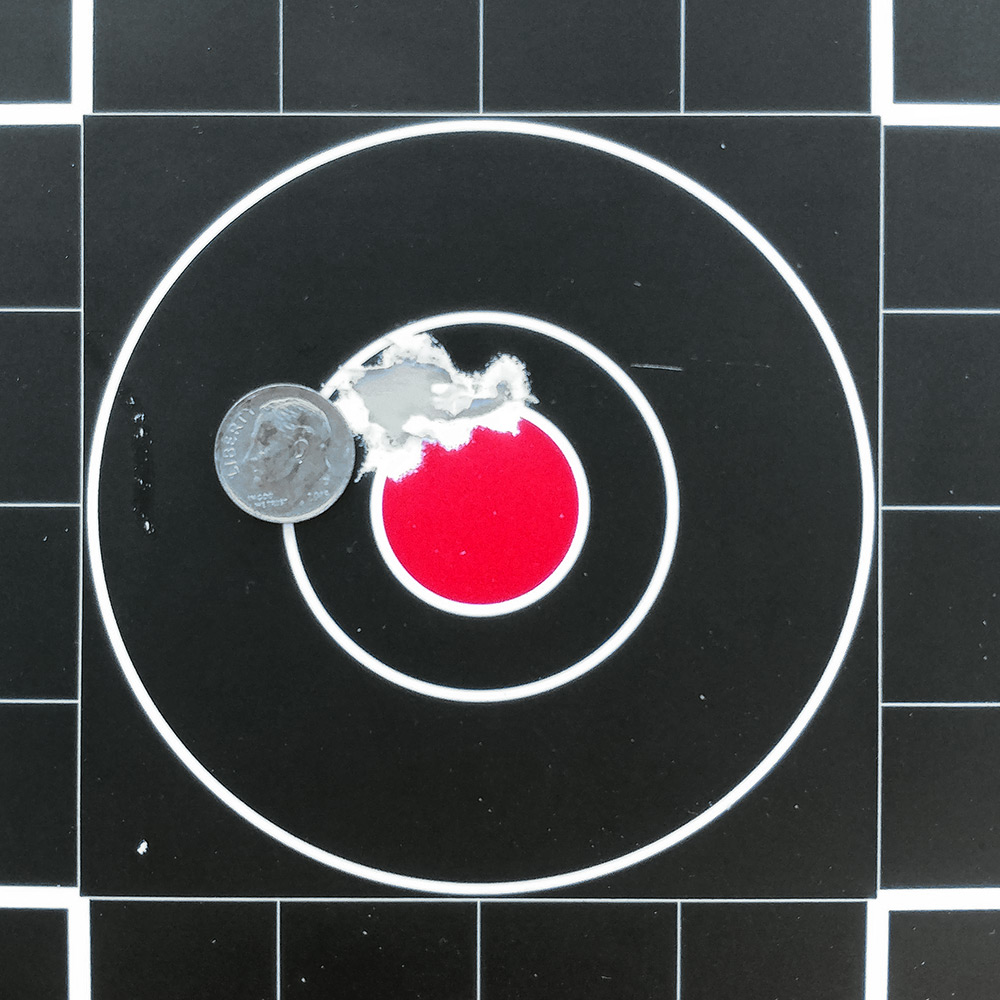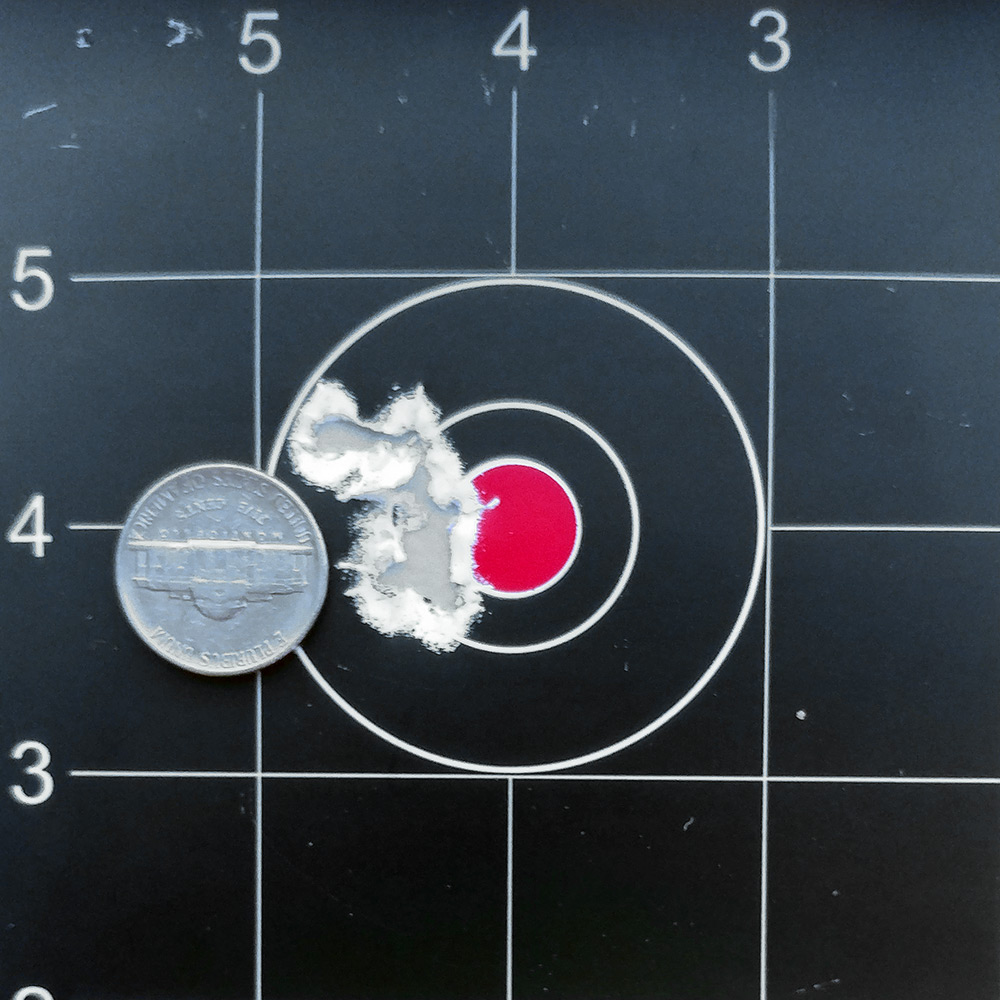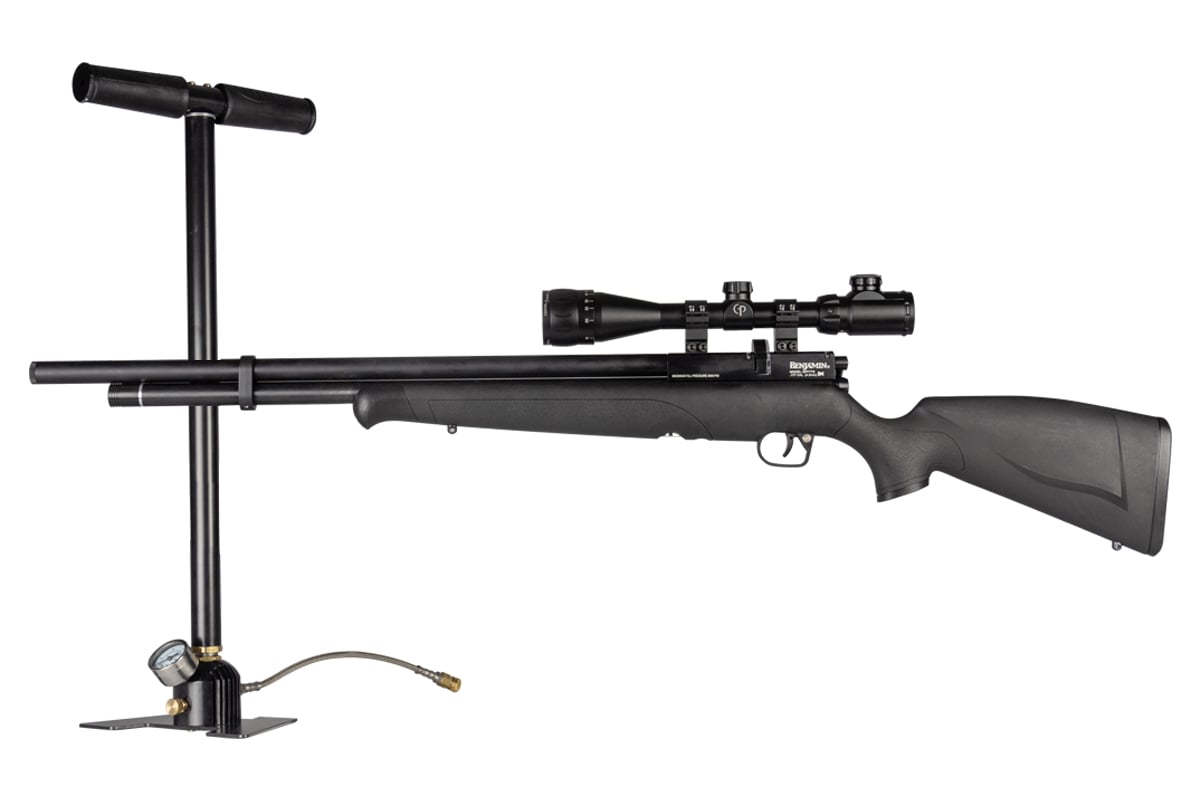Free Shipping on orders over $150
Talk to an Airgun Specialist 1-866-477-4867
Definitive Guide to Benjamin Fortitude
The Benjamin Fortitude is not the first price-point PCP to sport features usually found on higher end guns, but it is definitely one of the best! Boasting a shot count that puts most of its competition to shame, the Benjamin Fortitude is a regulated, lightweight, accurate airgun that is one of the best values on the market.
Highlights
Detailed Review
The Benjamin Fortitude is basically a marriage of previously tried and true Benjamin PCPs. The stock and trigger are drawn directly over from the Maximus while the breech is modified from the Marauder Pistol and the barrel and shroud are adapted from the Marauder. This is very smart design on the part of Benjamin and it means that much of the aftermarket support that has been built up around these previous guns are available for the Fortitude. The first thing you will notice when you pick up your Fortitude is how light it is. At just over 5 lbs, it is one of the lightest PCPs on the market, making it a perfect gun for a full day of rabbit or squirrel hunting. The ambidextrous all-weather synthetic stock has texture at the grip and the forestock which gives you a little better purchase on it, although with as light as it is you shouldn't have any problem holding onto it even when wet. It sports conveniently pre-mounted sling studs that allow you to attach accessories such as a sling, or with the addition of a Picatinny rail adapter, a flashlight, laser, or bipod. The stock does have a hollow sound to it that some might complain about, but that is just part of having such a light stock. The buttplate is plastic and not rubber, which doesn't matter as far as recoil goes because there isn't any, but it does mean the gun may slip when leaning up in a corner. The schnabel at the front of the stock and its overall slim sleek lines make the Fortitude easy on the eyes. The 23.3" barrel is made using Benjamin's latest precision-honing technology, which results in improved and consistent accuracy. It is free floating, so changes in temperature won't throw off your point of impact, and it has the same shroud system that makes the Marauder one of the quietest airguns on the market so the Fortitude won't spook the critters or the neighbors. Because of its longer barrel, the Fortitude only has three baffles instead of the seven that are in the Marauder but it is still pretty quiet. This is due to the regulator and the extra length of the barrel. (On both guns that we tested, the shroud was not snugged down tightly. If accuracy isn't where you want it, give it a firm twist and see if the groups tighten up.) We're not sure if there is a depinger in the cylinder or not, but either way, there is no ping to speak of and overall this is a very quiet gun. The trigger is plastic, which again is part of keeping costs down, but the blade is nice and wide and it won't freeze your finger off in the winter like a metal trigger does. It is a very long and heavy single-stage trigger that isn't adjustable without modification. On our test gun, it broke at 5lbs 3.5 oz. It is the same trigger that's on the Discovery and Maximus so there are plenty of aftermarket ways to improve it, but as it stands it is one of the weak parts of the Fortitude. However, with a quick modification (that will, unfortunately, void your warranty) we were able to get it to break cleanly and crisply at 1lb 8.8oz. One of the things that we really appreciate about all of Benjamin's PCPs is the use of a Foster Quick Disconnect fitting instead of a fill probe to get air into them. It is located at the muzzle end of the reservoir and is covered by a Delrin cap that pops on and off and keeps dust and debris out. If the Fortitude is completely empty you will need to cock the gun before filling it or the air will just go through the valve and out the barrel. As with all PCPs, you should store the gun with at least 1000psi in the cylinder. Another convenient feature is the placement of the manometer, or pressure gauge, on the bottom of the gun just in front of the trigger, instead of at the end of the cylinder by the muzzle where many manufacturers put it. The optimal fill range is clearly shown to be between 1000 and 3000psi and that matches up well with what our testing demonstrated the actual working pressure to be. If you overfill the gun, dry fire it down to 3000psi, but if you overfill it so much that the valve locks up and won't shoot down, you will need to buy the degasser tool to fix it. One difference between the Marauder Pistol and the Fortitude is that the latter's breech has been modified to accept the standard Marauder magazine, which is one of the best on the market. It is absolutely reliable, very easy and straightforward to load and, best of all, it is very affordable. And, as all you hunters will want to know, it is deep enough to hold long pellets such as Predator Polymags. The magazines in both .177 and .22 hold ten rounds. Like most Benjamin PCPs, the Fortitude is actuated by a bolt action. However, the effort required to cock the Fortitude is considerably higher than on any of its older brothers, and this is one of the few things that we wish were different about it. However, the effort is only high when you pull the bolt handle back slowly. The cocking effort is reduced very much if you pull the bolt back quickly and firmly, at which point it isn't bad at all. The bolt handle is also quite small, being the same as found on the Prod (Marauder Pistol) and a larger Marauder style bolt handle would make it a little more comfortable. While the cocking effort can be stout, the action is very smooth on both of the Fortitudes that we tested. Now we get to the part that distinguishes the Fortitude from nearly all other entry-level PCPs: the regulator. One of the best things about having a regulated gun that gets a high shot count is the flexibility to fill it to lower pressures. If you are hand pumping, for example, and only want to fill it to 2000psi or 2500psi you will still get consistent shots but you will just not as many of them. Unlike the Gauntlet's regulator, which is fairly easy to adjust, the Fortitude's regulator is set where it is and there's no way to adjust it without being a bit of an airgun smith.
Performance and Accuracy
When the Benjamin Fortitude PCP rifle was announced at Shot Show 2018 with claims of 80-90 consistent shots we were told that most of those shots would be on the regulator and that the last twenty or thirty would be off the reg but still fairly consistent, and that is what we have found more or less with the Fortitudes that we have tested. Crosman's stated number of useable shots is based on how many fall within 10% of the max velocity, and that was pretty close to what we saw. For example, the .22 11.75 GTOs had a max velocity of 847 fpe and we got 90 shots on one fill, with a spread of 95 fps. However, that is a wider spread than we feel is useable in most situations and we recommend that you refill after 60-70 shots. If you do that you'll keep all of your shots within 40-50 fps and that spread won't affect your point of impact much out to 35-45 yards. In .177, however, we got 90 shots on one fill with an extreme spread of only 54fps and a standard deviation of 10.67. This is an incredible number of shots, especially out of such a small air cylinder, and with time the regulator should break in and give a tighter standard deviation. You may also find that taking time between shots gives the regulator a chance to catch up" and the spread will shrink. As you can see from the chart below, the Fortitude isn't the most powerful entry-level PCP on the market, but that really is the tradeoff for getting a lot more shots per fill than almost any other PCP in its class. We tested the .22 Fortitude for accuracy and found three pellets to perform the best: H&N Sniper Lights, Predator GTOs, and JSB RSs. At 35 yards, both the Sniper Lights and the JSB RS pellets put 8/10 pellets in just over a third of an inch center-to-center with the remaining two opening the groups up to about 1/2 of an inch, while the GTOs put 9/10 right at 1/2 of an inch center-to-center and one flier opened it up. But that one flier was absolutely the fault of the shooter, so we are calling that a third inch group! Accessories for the Benjamin Fortitude
As with all PCPs, you need some way to fill up the Fortitude. Usually that means a tank or a compressor, but with the air cylinder on the Fortitude being fairly small and regulated it is a perfect fit for a hand pump. The Air Venturi G7S, the Benjamin Pump, or the Air Venturi MK4 would all be good choices depending on your budget. The Fortitude doesn't come with open sights so you will need an optic. Centerpoint makes a very affordable 4-16x40 AO scope that has worked well in our testing, especially at that price. For a bit more, the Hawke 3-9x40 AO scope has a great reticle and very clear glass and for the money it is very hard to beat. Of course, we've got you covered with an exclusive Benjamin Fortitude combo that includes a Benjamin hand pump, the Centerpoint 4-16x40 AO scope mentioned above and rings. This is an ideal entry level combo that not only includes everything you need to begin shooting but allows you to save money at the same time. Summing Up
There are now quite a few entry-level PCPs that sport a lot of features and perform at a very high level. However, none but the Benjamin Fortitude have the combination of a regulator, shrouded barrel, multi-shot magazine, and extremely high shot count, all in a very lightweight package. If you are looking for a gun that will get you a lot of consistent shots and be easy to carry all day long, the Fortitude may be the gun for you!